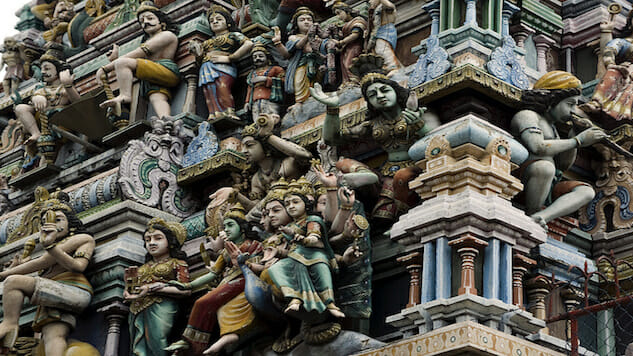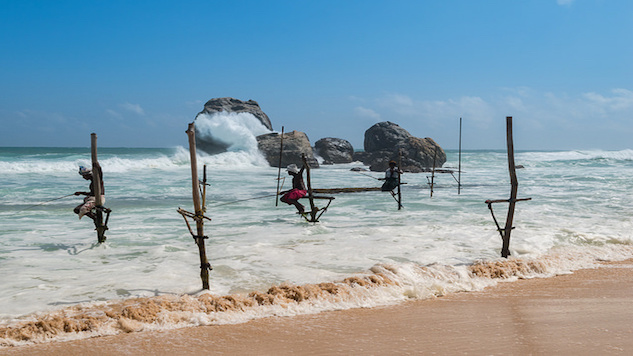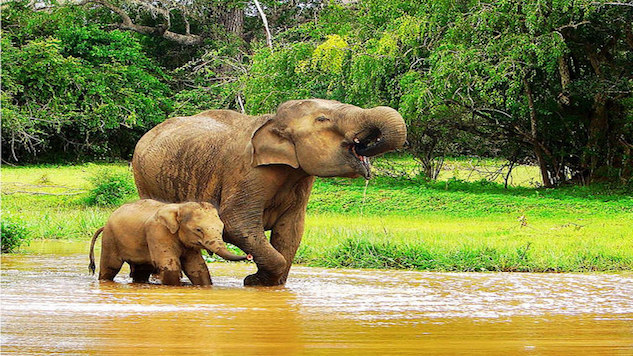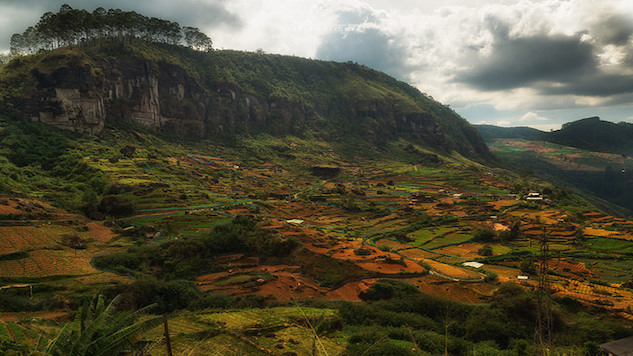
Never thought of visiting Sri Lanka? Well, you might be soon. In our Breakout Role series, we take a look at places that have seen huge increases in tourism in the last few years, and try to figure out what’s causing all the hype.
Whether they know it at the time, tourists planning a trip to Sri Lanka are oftentimes planning more than one vacation. The reason for this isn’t as arcane as it sounds: despite the fact that the South Asian nation is barely larger than the state of West Virginia, its sheer diversity of landscapes, attractions and destinations seems to have a way of turning first time visitors into eager returning guests.
“People are baffled in not only what you can do now on your current trip, but [they also say] ‘oh my God, I need two more trips to really look at what Sri Lanka is,’” says Skandha Ponniah, marketing manager for The Fabulous Getaway a travel group that manages multiple Sri Lankan tour companies including Red Dot Tours and Sri Lanka In Style.
According to Ponniah, many of his customers are surprised by how much they’ve still yet to do when their trip has finished, and how entirely different their experience could be if they came back again. Over the past several years, foreign visitors have been getting more and more familiar with this concept—the island country’s number of yearly visitors has more than quintupled since 2009, with the figure reaching more than 2 million in 2016.
![]()
Lights
 Photo: f. ermert, CC-BY
Photo: f. ermert, CC-BY
One of the largest reasons for Sri Lanka’s recent tourism growth has been the end of the country’s civil war, which ended in 2009 after more than 25 years of violent conflict. During that time, the island only saw a few hundred thousand visitors per year, but today the tourism industry accounts for almost five percent of the nation’s economy.
Despite the benefits brought on by the war’s end, there’s more than one reason for Sri Lanka’s influx of visitors. In recent years, flight availability has drastically improved, with travel hubs such Singapore, London and Middle Eastern countries such as Oman to Colombo recently opening a number of connections and daily trips to Colombo, the nation’s capital.
Another reason for Sri Lanka’s recent popularity: money. The Asian nation has ranked among some of the world’s best bargains, and thrifty travelers can survive on as little as $20 per day.
Additionally, Ponniah says the country is finally developing a reputation as a year-round destination, as improved accessibility throughout the island means visitors can avoid bad weather regardless of the season. Despite it’s small size, holiday-ready weather is always available in Sri Lanka, because different annual rain seasons affect certain parts of the island differently—with the southwest and northeast sections of the island dealing with yearly monsoons during almost entirely opposite seasons.
“There’s always somewhere in Sri Lanka that you have sunshine,” Ponniah says.
![]()
Camera
 Photo: Amila Tennakoon, CC-BY
Photo: Amila Tennakoon, CC-BY
Locally, the effects of this growth have been pretty widespread. While there has naturally been greater development in highly-volume destinations such as Colombo, Kandy and Galle, real estate investments are pouring in nationwide, and Ponniah says areas off the beaten path are seeing the benefits of tourism more and more.
As is often the case with rapid development though, overcrowding is becoming a concern in Sri Lanka, as there are fears that the country may receiving more tourists than its hotels can accommodate. Also, there’s a growing environmental concern, as pollution and an excess of visitors have put the viability of some destinations in jeopardy.
“All of these easy to find, or easy to utilize or easy to exploit sites are suffering from an oversubscription, and thus an unsustainable use,” Ponniah says.
The government is taking steps to combat these problems, and has made commitments to help make developments in previously less-popular regions in the country’s north and east more sustainable, but it’s still unclear whether these regulation will be able to keep up.
![]()
Action
 Photo: >Maarten Elings, CC-BY
Photo: >Maarten Elings, CC-BY
Even planning a first visit to Sri Lanka can be overwhelming, but—with some careful prioritization—it’s possible to see the country’s absolute best in the span of about a week. Amid these can’t-miss attractions, the Cultural triangle stands out above the rest. Encompassing an area between the cities of Kandy, Anuradhapura and Polonnaruwa that features ancient ruins, magnificent Buddhist architecture and six UNESCO World Heritage sites, the area provides a tour through some of the island’s most awe-inspiring cultural draws.
For a taste of natural beauty, the country’s national parks provide close-up views of some of the world’s most incredible animals. Visitors can find leopards and sloth bears in Yala National Park, observe elephant herds in Udawalawe National Park and participate in whale watching in the coastal town of Mirissa, which is located at the island’s southern tip.
The seaside capital of Colombo is also a must-see, with some of the nation’s best food and ample accommodations, as well as easy access nearby to historical landmarks, beaches and safaris. For those looking for a more niche experience, there are entire tours shaped around exploring the world of Ceylon Tea, and the eastern beaches of Arugam Bay are putting Sri Lankan surfing on the map.
When You Go
Flight Rates: Round trip flights from New York to Colombo run between $980 and $1,550, while trips from Los Angeles range from $1,040 to $1,560.
Travel Concerns: The U.S. Department of State suggests caution during political demonstrations in Colombo, as well as in the country’s northern regions, where there is still a heavy military presence. Additionally, a tourist visa is required for entry.
Currency Exchange: 1 USD = 152 Sri Lankan rupees
More Info: Sri Lanka’s official travel website offers sample itineraries, a list of upcoming events and information regarding travel to and within the country, and Lonely Planet’s Sri Lankan guide includes a helpful survival guide and a number of great trip ideas.
Top photo: Malcom Browne, CC-BY
Dillon Thompson is University of Georgia student and freelance writer with a love for travel and an addiction to coffee and hip-hop music.